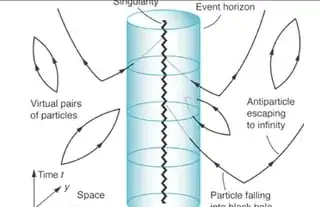The particle-antiparticle view is just a pictorial simplification of the process that bears a lot of issues. It is meant as an illustration, but shouldn't be taken too seriously.
What actually happens in the process is that the very notion of particle is dependent on an observer and is not a fundamental notion in Physics. In the particular case of Hawking radiation, the notion of particle that exists in the spacetime before a star collapses into a black hole does not coincide with the notion of particle after the collapse has come to an equilibrium state in which the black hole is now stationary. As a consequence, a stationary observer sees creation of particles by the black hole, but that is due to the fact that the very notion of what is a particle has changed. I've given a more detailed description in this answer, which still attempts to not dive too deep into the math.
Hawking's original article in fact even states about the particle-antiparticle viewpoint that
It should be emphasized that these pictures of the mechanism responsible for thermal emission and area decrease are heuristic only and should not be taken too literally.
Hawking radiation is a prediction from a subject known as Quantum Field Theory in Curved Spacetime. As the name suggests, its fundamental objects are fields, not particles. In a few situations, it is convenient to interpret the field variables in terms of particles and it might lead to some intuition, but it is necessary to be careful and recall that the particle viewpoint is not fundamental, but rather a cartoonish illustration of the process meant to provide a bit more intuition.

